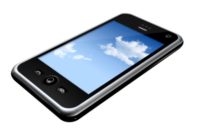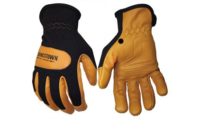You can’t be a safety manager without a smartphone
Or a tablet device…

 Talking to vendors at last week’s National Safety Congress & Expo, sponsored by the National Safety Council, it’s clear a safety pro who comes to work without a smartphone is going to lost in the dark.
Talking to vendors at last week’s National Safety Congress & Expo, sponsored by the National Safety Council, it’s clear a safety pro who comes to work without a smartphone is going to lost in the dark.
According to a recent report from John Sonnhalter, founder of Sonnhalter, a business-to-business marketing agency, experts expect more than 150 million smartphone users and 90 million tablet users by 2015.
If there was a buzz coming from the expo floor, it had to do with the number of exhibitors with products and services that provide all sorts of data and metrics to the safety department. More specifically, much of the data can be called up on smartphone screens or tablets. Prices for these soon-to-be tools of the trade keep coming down as the number of safety-related apps skyrockets.
There is a heat safety app from OSHA. Apps for emergency reporting and alerting. SOS or personal safety apps. Apps for what PPE should be used against a host of chemicals, for measuring sound intensity, ergonomic set ups, audits, pre-start checks, inspections, training, for searching and viewing safety data sheets, NIOSH’s Pocket Guide to Chemical Hazards, job site safety materials for contractors, safety self-assessments, and even an app to help you identify if your roof or other location is suitable for solar panel installation.
The question is: does a “digital divide” exist in the safety world? The “have smartphones, etc” vs. the “have nots?”
Safety work is another arena, like classroom teaching, where BYOD is in play. That’s Bring Your Own Device (to work). Sure, some companies will foot the bill for safety departments to have tablet devices, or a single tablet, but it’s doubtful many companies will purchase smartphones for their employees. Many companies will pay for their use, or a percentage of the monthly phone bill based on estimating how much of the monthly charge is work-related. Plus, smartphones are designed, stylized, colored and affixed with various bells and whistles to appeal to a wide variety of consumer tastes. It’s gotten to where your particular choice of a smartphone tells people something about yourself. So most people want the freedom to choose.
If we’re inundated with so many apps today, imagine three years from now. Smartphones will be almost indispensable to safety pros, if they already aren’t.
The same big corporation-small business divide that’s so distinct in safety today, with the big boys having sophisticated safety systems and small businesses often having none, will play out in the world of safety apps. Professionals in large companies will have access to a library of safety apps. Small shops with no full-time safety manager present won’t know most of these apps exist.
And the safety competency gap will grow wider.
Looking for a reprint of this article?
From high-res PDFs to custom plaques, order your copy today!








